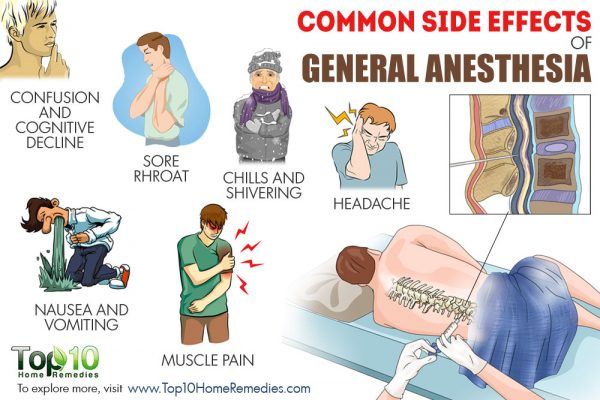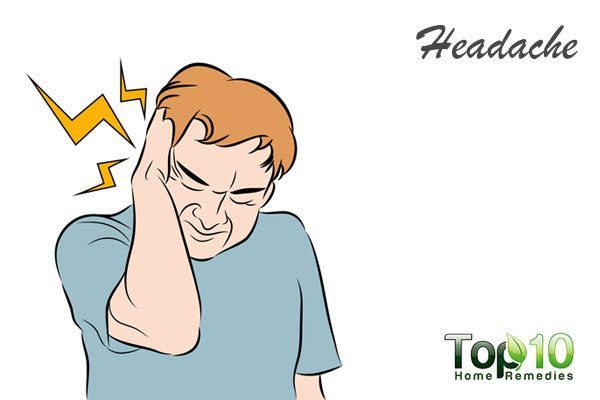In many medical procedures, anesthesia is used. It is a kind of temporary induced loss of sensation or awareness. One common type of anesthesia is general anesthesia, which is mainly used for surgical procedures where it may be safer or more comfortable for you to be unconscious.
In general anesthesia, sedation is provided through inhaled or intravenous (IV) medications. Apart from general anesthesia, there are two other types of anesthesia. These are regional (numbing only part of your body, usually below the waist) and local (numbing a small area) anesthetics.
Before undergoing general anesthesia, an anesthesiologist talks with the patient to gather information related to the patient’s health history, prescribed and over-the-counter medications as well as supplements the patient may be taking, possible allergies and any past experiences with anesthesia.
On the basis of this information, the anesthesiologist chooses the safest medications that will trigger fewer side effects after the surgery is done.
Due to its effects on the entire body, general anesthesia can cause a number of side effects and complications, which mostly depend on your individual condition and the type of surgery.
Most side effects clear up within 24 hours or so. Deep anesthesia, however, can have subtle but long-lasting side effects.
Here are some of the common side effects one may experience from general anesthesia.
1. Nausea and Vomiting
Feeling sick and vomiting is one of the most common side effects of general anesthesia. In medical terms, it is known as postoperative nausea and vomiting (PONV).
PONV may occur in the first 24 hours after surgery and may continue for a couple of days. It may be triggered by a number of factors, such as the medication, motion and type of surgery.
However, females, non-smokers and people who have a history of motion sickness are at a higher risk of suffering from these side effects.
A 2012 study published in the British Journal of Anaesthesia reports that the most reliable independent predictors of PONV were female gender, history of PONV or motion sickness, non-smoker, younger age, duration of anesthesia with volatile anesthetics and use of postoperative opioids.
2. Chills and Shivering
Chills and shivering, medically known as hypothermia, is another common side effect that patients experience once they regain consciousness after surgery.
This shivering can cause a lot of discomfort in patients recovering from general anesthesia. It usually results from the anesthetic inhibiting the body’s thermoregulatory capability. At the same time, cutaneous vasodilation (triggered by postoperative pain) may also be a causative factor.
A 2010 study published in Anesthesia Progress reports that mild hypothermia is extremely common during anesthesia and surgery. The basic process occurs as core body heat redistributes to the skin surface through anesthetic-induced vasodilation and depression of hypothalamic thermoregulatory centers.
This side effect is more common in males than females. Also, longer surgeries may trigger this side effect.
A 2014 study published in Anesthesiology and Pain Medicine reports that ketamine and pethidine are both equally effective in reducing postoperative shivering.
3. Sore Throat
A sore throat is another common side effect. Along with a sore throat, mild hoarseness and dry mouth are also common after surgery.
The tube that is put in the throat to help you breathe during the procedure can lead to a sore throat after it’s removed. A sore throat and hoarseness in the first hours to days after surgery is common in almost 50 percent of people who are given general anesthesia.
A 2002 study published in the British Journal of Anaesthesia reports that airway management, female sex, younger patients, surgery for gynecological procedures and use of succinylcholine predicts the likelihood of a postoperative sore throat.
Increased awareness of the predictive factors can help avoid this combination and improve patient satisfaction.
A 2012 study published in the American Association of Nurse Anesthetists Journal explores risk factors associated with a postoperative sore throat and hoarseness in women following intubation. In this study, three variables were found to be significant risk factors: age greater than 60 years, the use of a throat pack and endotracheal tube.
Having a regional anesthetic can prevent this problem. However, if you need a general anesthetic, a smaller size for the device used to help you breathe during surgery can be useful.
4. Headache
It is common to experience headaches, dizziness and drowsiness shortly after regional or general anesthesia
This usually happens in case of spinal and epidural anesthesia used for operations like Caesarian section, hip replacement or bladder operations involving the lower body. Since the injection is given in the back, it may lead to leakage of the spinal fluid through the punctured hole.
The loss of spinal fluid, in turn, leads to decreased pressure in the rest of the fluid which surrounds the brain and spinal cord, thus giving rise to a spinal headache.
This type of headache typically begins within 12 to 24 hours after surgery. The pain tends to get worse when you sit up as the pressure around the brain is reduced even further.
In a 2013 study published in Caspian Journal of Internal Medicine, researchers reported that 17.3 percent patients presented postural headache characteristic of post spinal puncture headache.
5. Confusion and Cognitive Decline
As one begins to awaken from general anesthesia, he or she may experience some confusion, disorientation or difficulty thinking clearly. This is normal and can last for a few days.
However, for elderly people, confusion can last for days or weeks. The problem is more severe in those who already suffer from some kind of existing memory problem.
A 2006 study published in Continuing Education in Anaesthesia, Critical Care & Pain reports that the risk of prolonged postoperative cognitive dysfunction is more than 10 percent following major surgery in patients of more than 60 years of age.
Increasing age is a risk factor and the incidence in patients of more than 80 years of age may be as high as one in three.
Another study published in 2014 in the Singapore Dental Journal also reports that postoperative cognitive complications are often transitory, but can be associated with devastating outcomes in elderly patients.
6. Muscle Pain
Muscle pain is another common side effect of general anesthesia.
The medications used to relax the muscles so that a breathing tube can be inserted can cause soreness and muscle pain. One may also experience pain and discomfort in the neck, shoulders, back or chest due to lying for a prolonged time on an operating table.
Such pain usually appears on the first day after surgery and can last two or three days. At times, it can be quite severe. Fortunately, it does go away without specific treatment.
Muscle pain is most common in young female patients, especially those undergoing ambulatory surgery, which means one goes home the same day as the surgery.
7. Teeth Damage
Another side effect of general anesthesia is damage to the mouth or teeth, however, it is not very common.
A very small proportion of people undergoing general anesthesia may have small cuts on to their lips or tongue from the breathing tube, and some may have damage to their teeth, particularly on the upper front teeth.
Patients who have poor dental health and where the anesthetist had difficulty getting the breathing tube in place are at a higher risk of suffering from this side effect.
Serious Complications
On rare occasions, general anesthesia may cause more serious complications. This may include postoperative delirium, cognitive dysfunction, brain damage, heart attack, stroke, or malignant hyperthermia.
Resources:
https://academic.oup.com/bja/article/109/5/742/306384/Evidence-based-analysis-of-risk-factors-for
http://apm.amegroups.com/article/view/1035/1261
https://www.ncbi.nlm.nih.gov/pubmed/16969906
https://www.ncbi.nlm.nih.gov/pmc/articles/PMC2844235/
https://www.ncbi.nlm.nih.gov/pmc/articles/PMC4013503/
https://academic.oup.com/bja/article/88/4/582/311280/Postoperative-sore-throat-after-ambulatory-surgery
https://www.aana.com/newsandjournal/Documents/risk-fact-dev-postop-sore-throat-ep-trach-wom-0812-pS67-S73.pdf
https://www.ncbi.nlm.nih.gov/pmc/articles/PMC3237272/
http://ceaccp.oxfordjournals.org/content/6/1/37.full
http://www.sciencedirect.com/science/article/pii/S0377529114000145
https://www.ncbi.nlm.nih.gov/pmc/articles/PMC3034231/
http://www.aornjournal.org/article/S0001-2092(07)67176-2/abstract
https://academic.oup.com/bja/article/91/5/718/253361/Post-dural-puncture-headache-pathogenesis
https://www.ncbi.nlm.nih.gov/pmc/articles/PMC3762227/
http://www.aornjournal.org/article/S0001-2092(07)67176-2/abstract
http://apm.amegroups.com/article/view/1035/1261
https://www.ncbi.nlm.nih.gov/pubmed/16969906
https://www.ncbi.nlm.nih.gov/pmc/articles/PMC2844235/
https://www.ncbi.nlm.nih.gov/pmc/articles/PMC4013503/
https://academic.oup.com/bja/article/88/4/582/311280/Postoperative-sore-throat-after-ambulatory-surgery
https://www.aana.com/newsandjournal/Documents/risk-fact-dev-postop-sore-throat-ep-trach-wom-0812-pS67-S73.pdf
https://www.ncbi.nlm.nih.gov/pmc/articles/PMC3237272/
http://ceaccp.oxfordjournals.org/content/6/1/37.full
http://www.sciencedirect.com/science/article/pii/S0377529114000145
https://www.ncbi.nlm.nih.gov/pmc/articles/PMC3034231/
http://www.aornjournal.org/article/S0001-2092(07)67176-2/abstract
https://academic.oup.com/bja/article/91/5/718/253361/Post-dural-puncture-headache-pathogenesis
https://www.ncbi.nlm.nih.gov/pmc/articles/PMC3762227/
http://www.aornjournal.org/article/S0001-2092(07)67176-2/abstract
https://www.top10homeremedies.com/news-facts/side-effects-general-anesthesia-must-know.html?fbclid=IwAR0jv76iS60-egdowAReZqgF74kXLIqiy4ula7Wvyw88Eg38MNNYup8GLj8








沒有留言:
張貼留言